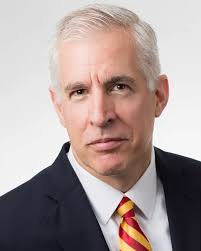Contractors Prepare for Tariff-Driven Cost Increases

WASHINGTON, D.C. — February 26, 2025 – With new and proposed tariffs under the Trump administration, contractors are facing rising material costs and uncertain project timelines. The construction industry, already battling nonresidential spending declines and inflation, is now re-evaluating contracts to shield against price volatility and supply chain disruptions.
During the Trump administration’s first term, tariffs drove steel prices up by 14%, with a 10% net increase by the end of 2019. As the industry braces for similar impacts, contractors and legal experts are advising firms to implement risk-mitigation strategies, including material escalation clauses, change-in-law provisions, and risk-sharing agreements.

A New Playbook: Learning from COVID-Era Contract Adjustments
The COVID-19 pandemic forced contractors to push for material escalation clauses in contracts to adjust pricing based on market conditions. Initially met with resistance from project owners, these clauses became widely accepted as material costs fluctuated unpredictably.
“Material price increase terms became more common during the first Trump administration and were ubiquitous during the pandemic,” said Matthew Long, construction partner at Cohen Seglias. “During that time, owners were generally forced to accept these terms. Contractors have continued to request material price escalation terms in recent years, with less success.”

With tariffs returning, Long expects a resurgence in these contract terms, as many industry-standard contracts, such as those from ConsensusDocs, now include escalation provisions.
Addressing the Dual Challenge: Cost & Delays
Tariffs not only increase costs but also extend project timelines due to delayed shipments of foreign-sourced materials.
“It’s not just about the money — even if I can pay more or have an avenue to have somebody reimburse me that money, how much longer is it now going to take me to get that material?” said Zack Rippeon, partner at Smith Currie Oles. “Protections for contractors need to focus on both cost impact and time impact.”
To combat these challenges, legal experts suggest several contract strategies:
✅ Material Escalation Clauses – Adjust contract pricing based on real-time material costs.
✅ Change-in-Law Provisions – Protect contractors from new tariffs imposed after contract execution.
✅ Force Majeure Clauses – Justify schedule relief in extreme circumstances (though often don’t cover cost compensation).
✅ Contingencies & Allowances – Allow for cost fluctuations within guaranteed maximum price (GMP) contracts.
“Construction contracts can address issues associated with tariffs” via escalation provisions, said David Suchar, partner at Maslon. “They typically allow contractors to seek additional compensation if tariffs cause increases in costs for certain project materials.”

Owners Push Back: The Risk of Contract Adjustments
Despite the potential benefits for contractors, owners remain hesitant to accept tariff-related clauses due to budget uncertainty.
“The word ‘tariff’ probably doesn’t exist in any standard form contracts,” said Rippeon. “But the concept of material escalation is absolutely something that is discussed and negotiated.”
Owners may reject bids that include tariff protection clauses, instead selecting contractors willing to absorb the risk.
“Even if a contractor insists on a tariff-related protection clause, owners may simply choose another bid without one,” said William Thomas, construction attorney at Gausnell, O’Keefe & Thomas.

This tension forces contractors to strategically price bids—balancing risk mitigation with competitiveness in a highly contested market.
Alternative Approaches: Risk-Sharing & Project Structuring
As a response to uncertainty, some project owners are exploring risk-sharing agreements:
📌 Risk-Sharing for Cost Increases – Owners cover 5-10% of material cost overruns, while contractors absorb the rest.
📌 Breaking Up Large Contracts – Instead of one massive turnkey contract, owners divide projects into smaller, phased contracts to limit financial exposure.
“Owners are breaking up these very large projects into smaller pieces,” said James Doerfler, partner at Reed Smith. “I would expect that the prospect of tariffs is going to further accelerate that trend.”
Looking Ahead: The Future of Construction Contracts Amid Tariffs
As tariff-related challenges intensify, experts recommend that contractors proactively negotiate contract terms that offer greater flexibility in pricing and timelines.
While risk-sharing and escalation clauses provide a buffer, market competition and owner preferences will ultimately dictate how widespread these protections become.
For contractors, careful contract negotiations and diversified supply chain strategies will be critical in navigating tariff-related price volatility in 2025 and beyond.
Originally reported by Sebastian Obando in Construction Dive.
The smartest construction companies in the industry already get their news from us.
If you want to be on the winning team, you need to know what they know.
Our library of marketing materials is tailored to help construction firms like yours. Use it to benchmark your performance, identify opportunities, stay up-to-date on trends, and make strategic business decisions.
Join Our Community






